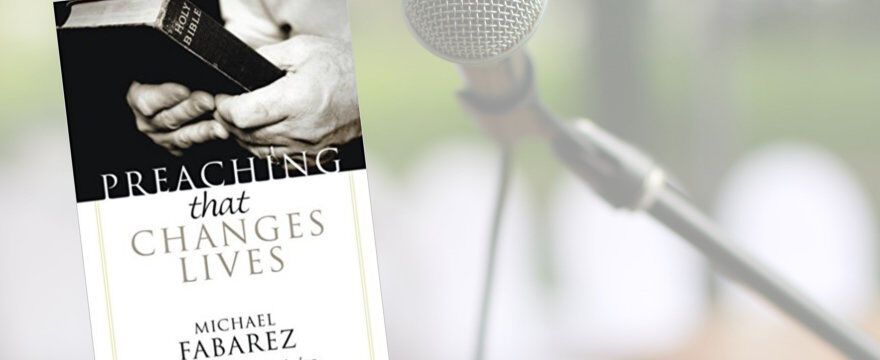Preaching That Changes Lives

Part of my year-long series on books about preaching
In my opinion, application is the hardest part of preaching. Haddon Robinson used to say that more heresy is preached in application than in any other part of the sermon. To apply the truth of Scripture in a way that’s faithful to the text and helpful to our hearers is a task that’s often underestimated, but important.
I picked up Preaching that Changes Lives by Michael Fabarez to help me with this challenge, and got more than I bargained for.
Preach to Apply
I was a bit cynical about Fabarez’s approach at first. He advocates that the preacher study the passage with life-change in mind, and structure the outline of the sermon around the relevance of the passage. I’m wary about sermons that are full of imperatives but not grounded in truth or the gospel. I’ve often thought of Lee Eclov’s advice to avoid bottom-line preaching, and to focus on shaping the mind rather than just commanding behavior. In other words, I was prepared to dislike this book.
But I know also know my weakness. Left unchecked, I face the danger of preaching abstractions and never showing what the truth looks like when it’s lived out. Fabarez does a great job building the case for application in preaching, and showing the steps we must take to apply the sermon well. He argues for theological, gospel-based preaching, and shows us how to translate gospel truths to life.
I especially appreciated his advice on how to distinguish implication from application, and how to develop a big idea that shows the relevance of the text. I’m not sure I’ll follow his advice to make all main points imperatives, but Fabarez does as good a job as anyone explaining how to apply the text.
More Than Expected
I read this book to get help with application, but I benefited from it in other ways too.
Fabarez spends a good chunk of the book calling pastors to a higher standard. Chapter after chapter calls the preacher to change, to work hard, to cultivate a culture of commitment and accountability, and to model the changes from last week’s sermon. Preaching involves the preparation of the preacher as well as the sermon, and I appreciated this book’s emphasis on the preacher’s personal life.
I don’t think I’ve read a more helpful chapter on the role of prayer in preaching. The book is worth purchasing for that chapter alone. We’d all be better off if we applied its lessons.
It’s also rare to find a chapter on teaching the congregation how to listen to preaching. Preaching for Life Change isn’t a complete manual on preaching, but it covers some areas that other books miss. It’s a great addition to any pastor’s library, because it likely won’t overlap with other preaching books.
Preaching to a Changing Culture
I’m glad I read Tim Keller’s Preaching last month, because it helped me understand how to preach Christ in a secular culture. And I’m glad I read Preaching for Life Change this month, because it helps me think about how to apply the text. Both come at the preaching task from different angles, and both angles are needed.
Preaching for Life Change is a little dated, but I think it will help me become a more practical preacher. If I can do that while avoiding the mistakes of poor application, I’ll be a better preacher indeed. We’ll see how good I am at applying its lessons.
I’ll post some quotes and takeaways from the book on Thursday.
More from Amazon.com






